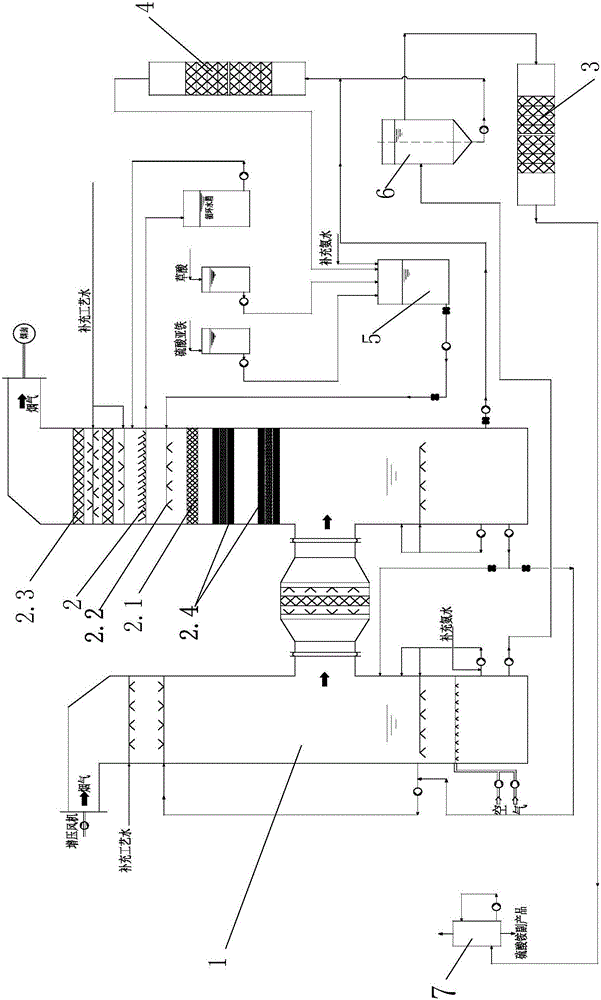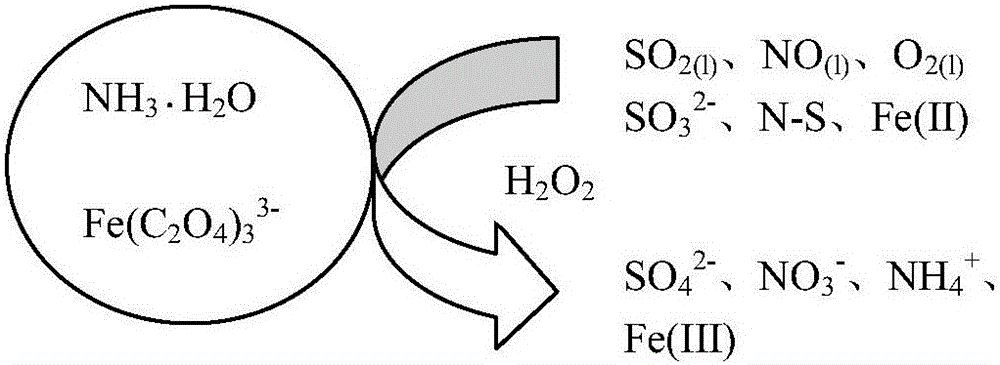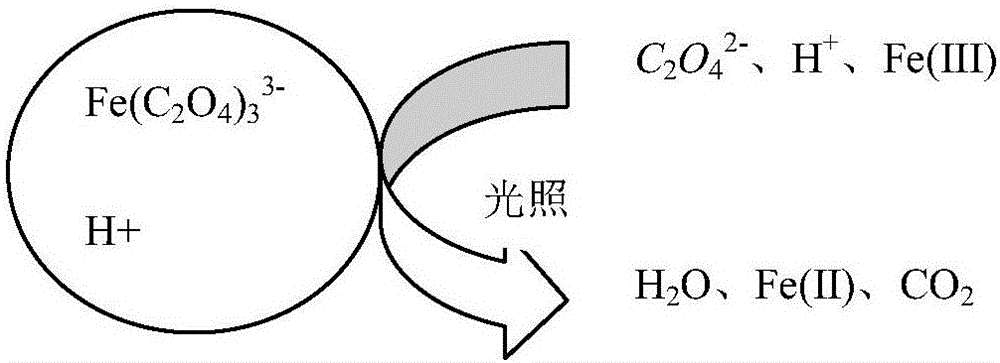Technology for synchronously denitrating ferrous oxalate on basis of flue gas desulfurization by aid of ammonia processes
A technology for ammonia desulfurization and ferrous oxalate, which is applied in gas treatment, separation methods, chemical instruments and methods, etc., can solve the problems of large power consumption, large consumption and high cost of simultaneous denitration operation in regeneration operation, so as to reduce the operation cost. , The effect of reducing the electrolysis voltage and the market cost is easy to obtain
- Summary
- Abstract
- Description
- Claims
- Application Information
AI Technical Summary
Problems solved by technology
Method used
Image
Examples
Embodiment Construction
[0033] Process example:
[0034] see figure 1 , in a flue gas desulfurization system, the flue gas volume is about 14-16Nm 3 / h,SO 2 Concentration: 500~800mg / Nm 3 , NOx concentration (mainly NO): 300~400mg / Nm 3 . Desulfurization uses a twin-tower process.
[0035] The physical parameters and related composition of the concentrate are as follows:
[0036] pH value: 5.0~5.5;
[0037] Ammonium sulfate concentration: 20-45% (mass percentage);
[0038] Total concentration of Fe(II)+Fe(III): 0.045~0.15mol / L;
[0039] Oxalic acid concentration: 0.27~0.9mol / L;
[0040] Absorption liquid temperature: 50-55°C.
[0041] The flue gas enters the upper part of the concentration tower 1 and flows from top to bottom. During the flowing process, it contacts with the concentrated liquid (containing ammonia water) drawn from the bottom of the tower and sent to the top of the concentration tower by the circulation pump of the concentration tower 1, and chemical absorption reaction occu...
PUM
 Login to View More
Login to View More Abstract
Description
Claims
Application Information
 Login to View More
Login to View More - R&D Engineer
- R&D Manager
- IP Professional
- Industry Leading Data Capabilities
- Powerful AI technology
- Patent DNA Extraction
Browse by: Latest US Patents, China's latest patents, Technical Efficacy Thesaurus, Application Domain, Technology Topic, Popular Technical Reports.
© 2024 PatSnap. All rights reserved.Legal|Privacy policy|Modern Slavery Act Transparency Statement|Sitemap|About US| Contact US: help@patsnap.com










